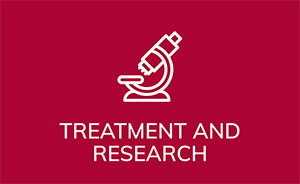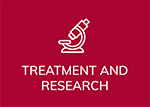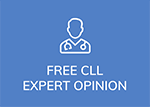Since the huge news blitz around the tenth anniversary of the first three cases from U PENN reported in the New England Journal of Medicine (NEJM), the question of CAR-T can be curative has been swirling in chronic lymphocytic leukemia/small lymphocytic lymphoma (CLL / SLL) online forums, CLL Society support groups and Facebook pages.
The short answer is that it is certainly beginning to look that way for a lucky few. This month celebrated the 10th CAR-T anniversary of Doug Olson, who remains cancer-free with persistent CAR-T cells that still play WHACK-A-MOLE should any cancerous CLL cells dare to reappear. The other long-term survivor William Ludwig also showed no evidence of recurrent cancer when he passed a few months back from COVID-19. You can read more about Bill’s story and his passing here.
A decade ago, Doug was in bad shape and running out of options. Now CLL is part of his history, not his present. Doug, by the way, was kind enough to give an encouraging talk to me and my wife, Patty, some four years ago when I was planning my CAR-T treatment at the Seattle Cancer Care Alliance/Fred Hutch in Seattle.
The father of CAR-T at U PENN, Carl June, MD, said in one of the dozens of articles published all over the mainstream and medical media to celebrate this accomplishment: “We can now conclude that CAR T cells can actually cure patients.”
It certainly seems possible for Doug and a few others, but really for only a very few others. Even Doug’s doctor at U PENN, Dr. David Porter, said, “the biggest disappointment is that it doesn’t work all the time.”
And that is likely an understatement.
Results depend on which trial and what else was done at the same time; for example, taking ibrutinib around the time of the CAR-T infusion may improve outcomes. Roughly between a fifth to up to over 80% of CLL patients have had a good response to CAR-T therapy. But, sadly, most have seen their cancer relapse, even if it disappeared completely after the treatment. Even for those who enjoyed a complete remission (CR) and undetectable measurable (minimal) residual disease (uMRD), in other words, there was no cancer detectable using our best technologies, CAR-T still should be considered a palliative and not a curative treatment for most of those with CLL / SLL. Most CAR-T cells don’t last ten years as they did for Doug. They are gone much sooner, and the cancer sneaks back.
It seems there was something special in the sauce for two of those first three CAR-T pioneers, but we don’t have the same recipe. The subsequent data have been more disappointing.
What that says to me is personally, and I hope I’m wrong, but I don’t expect my CAR-T to be my last step in my CLL journey. I am extraordinarily grateful for this long and lovely disease-free glide it’s given me.
It also tells me that cures and long remissions are possible. We need more research. We need CAR-T approved for those with CLL / SLL so that more patients are getting CAR-T. Then we can study the real-world cases to understand better when and why it works.
To learn more about CAR-T, please visit our website’s section on CAR-T and other cellular therapies. We have a well-stocked library of materials, including articles on basic and advanced science, many personal stories, graphics and a super Comic Book, and a new easy-to-understand introductory Brochure.
To read all the detailed science and immunology behind all the news headlines, here is an open-access link to the article in NATURE by Dr. June and many others. But, of course, to get the most out of it will require a decent understanding of the biology of the immune system.
In summary, the future for CAR-T looks bright.
Does CAR-T work all the time? Nope!
Does CAR-T cure some with CLL? You bet!
Stay strong. We are all in this together.
Brian
Brian Koffman MDCM (retired) MS Ed (he, him, his)
Co-Founder, Executive VP, and Chief Medical Officer
CLL Society, Inc.

















